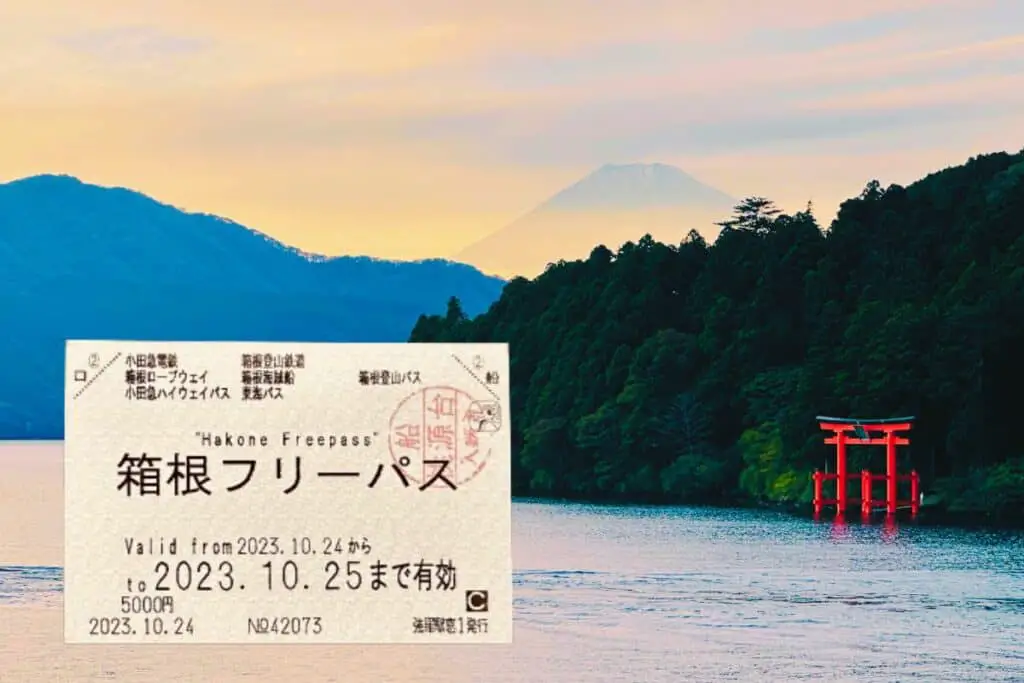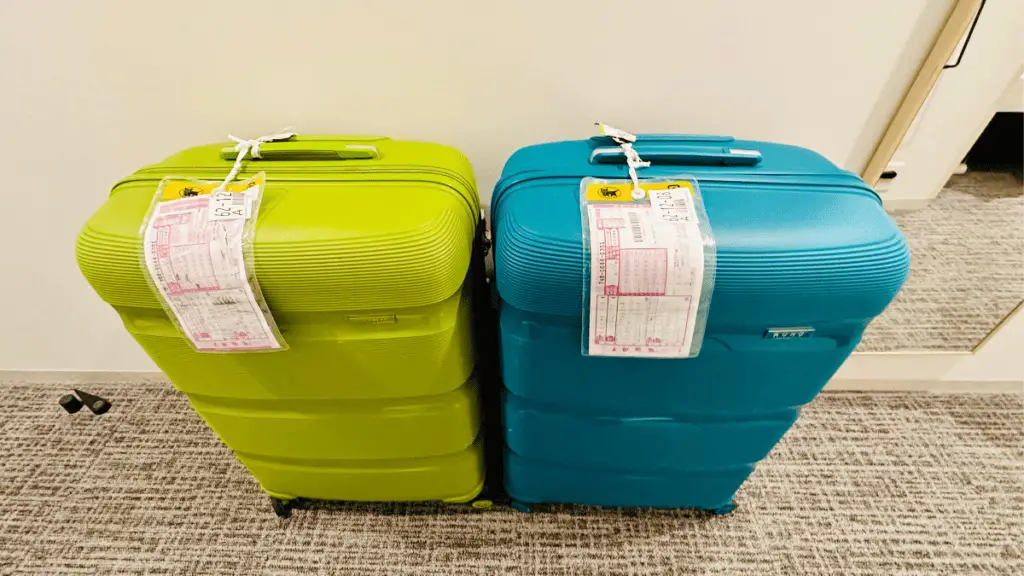The other day, a friend of mine told me about her visit to Nara Park which is known for the roaming deer, and after that, I was wondering what other parks existed in Japan and what awesome animals you can see during your visit.
Japan has many zoos, especially in the main cities. Being a country completely surrounded by water, Japan also has some of the most amazing aquariums. Besides that, large natural parks with wild animals are also great experiences.
Let’s take a look at a small list I gathered for you with some places you would probably like to see.
Ueno Zoo

©Leslie Bitene-Verrier
Address: 9-83 Uenokoen, Taito City, Tokyo 110-8711, Japan
Opening hours: From 9:30 to 17:00
Closes from December 29th to January 1st and every Monday (or Tuesday if Monday is a holiday or Tokyo Citizen’s Day on October 1)
Entry fee:
Hey, check out these recommendations I have for you!
Before going any further, take a look at some of the recommendations I've handpicked for you. I think these are essential items you should have on your trip to Japan. You can check them out and buy them directly from Amazon.
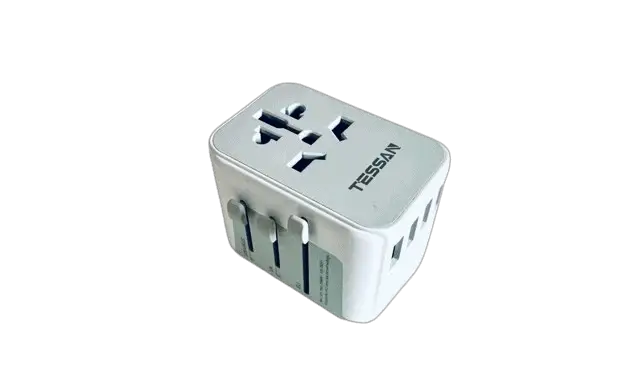
|

|

|
| A universal travel adapter | A 10,000 mAh power bank | A travel adapter and converter |
- Adults 600 yen
- Seniors 300 yen
- Students (13-15) 200 yen
- Children under 12 don’t pay
- Free for everyone on Ueno Zoo’s Anniversary Day (March 20), Greenery Day (May 4) and Tokyo Citizen’s Day (October 1)
Information: The Ueno Zoo opened in 1882 and it’s the oldest zoo in Japan. One of its main attractions, the Giant Pandas came to the zoo from China in 1972. Today, the Ueno Zoo has more than 3,000 animals of 400 different species, some of them are quite rare like okapis and aye-ayes.
Other than the pandas, this zoo has other interesting attractions like the Gorilla Woods and the Tiger Forest.
Here’s a small list of some amazing animals you can see in Ueno Zoo:
- Giant pandas
- Sumatran tigers
- Gorillas
- Polar bears
- Leopard cats
- Aardvarks
- Aye-ayes
- Galapagos tortoises
- Japanese pond turtles
- Japanese macaques (snow monkeys)
- …
Other than the animals, this zoo benefits from the amazing landscape of the Ueno Park, as the zoo is located inside it. Therefore, you may enjoy some Japanese traditional symbols like the five-storied Pagoda or the traditional tea ceremony house.
If you want to have access to the Ueno Zoo map before getting there, you can download the printable map from the official website.
How to get there: Since the zoo is located in the heart of Tokyo, you can easily get there by walking from the nearest station. From JR Ueno Station (Ueno Park Exit), you just have to walk for 5 minutes to arrive at the main gate.
Tokyo Sea Life Park
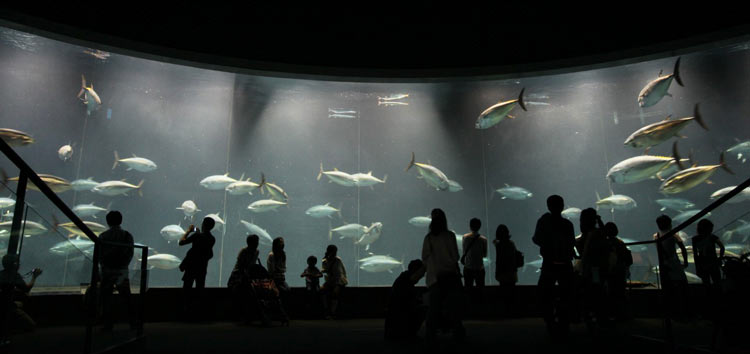
©JNTO
Address: 6-2-3, Rinkai-cho, Edogawa-ku, Tokyo 134-8587, Japan
Opening hours: From 9:30 to 17:00
Closes from December 29th to January 1st and every Wednesday (or Thursday if Wednesday is a holiday)
Entry fee:
- Adults 700 yen
- Seniors 350 yen
- Students (13-15) 250 yen
- Children under 12 don’t pay
- Free for everyone on the aquarium’s Anniversary Day (October 10), Greenery Day (May 4) and Tokyo Citizen’s Day (October 1)
Information: The Tokyo Sea Life Park is easily recognizable with its dome-shaped building. Here you’ll find lots of different species from all over the world as they decided to recreate different underwater environments.
In the Tokyo Sea Life Park, you will be able to see these exhibitions:
- Voyagers of the Sea
- Pacific Ocean
- Indian Sea
- Atlantic Ocean
- Caribbean Sea
- Oceans of Polar Regions
- Life of the Deep Sea
- Life on the Shoreline
- Penguin Exhibition
- Kelp Forest
- The Sea of Tokyo
- Life in Freshwater
If you want to have access to the Tokyo Sea Life Park map before getting there, you can download the printable map from the official website.
How to get there: You can use the Keiyo Line from JR Tokyo Station and you’ll arrive at JR Kasai Rinkai Koen Station in 15 minutes. From there, you just have to walk for 5 minutes to get to the park.
Nara park
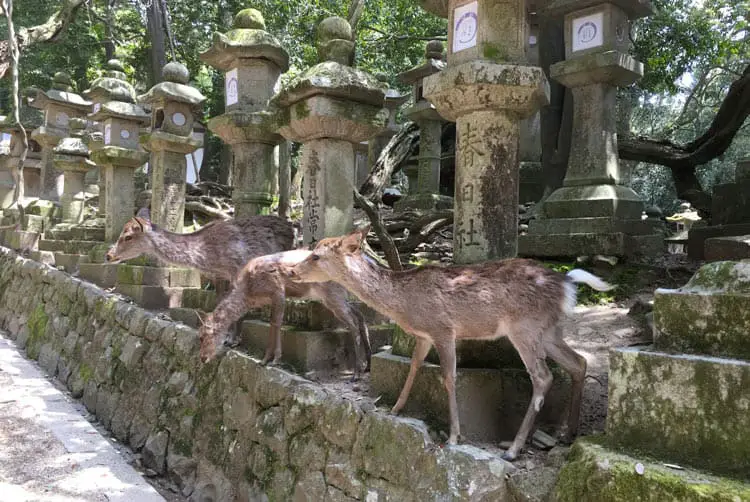
©Leslie Bitene-Verrier
Address: Nara City, Japan
Opening hours: 24 hours
Entry fee: Free admission
Information: Nara Park is one of those places you can only see in Japan. There’s no other place on earth where you can associate tradition, nature, and beauty in one place like this.
You’ll find a large population of deer that is really used to the human presence, and you can even buy crackers at the park to feed them. If you really love animals, this is the place to be.
Also, don’t miss the Great Buddha at Todaji Temple, which is the largest bronze Buddha in the whole world.
I recommend staying a while in Nara as there are so many beautiful things to see. This place is truly magical.
How to get there: The best way to get to the park is from Kintetsu Station (15-minute walk). If you come from Nara Station, it will be a little further (25-minute walk).
Osaka Aquarium Kaiyukan
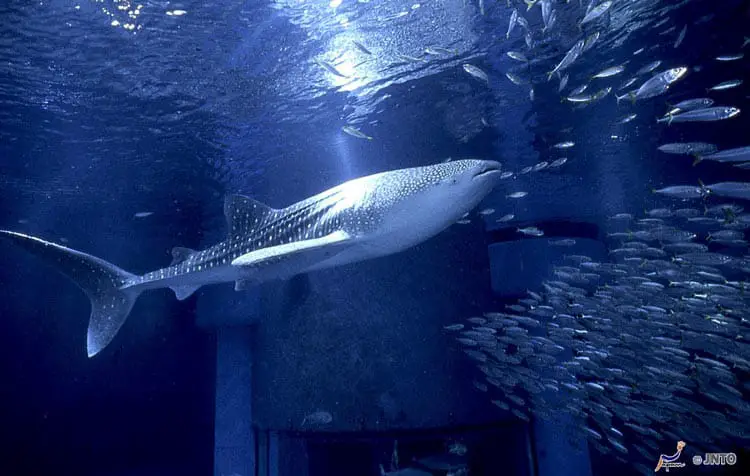
©JNTO
Address: 1 Chome-1-10 Kaigandori, Minato Ward, Osaka, 552-0022, Japan
Opening hours: From 10:00 to 20:00 in general, but it can change according to the season
Entry fee:
- Adults 2,300 yen
- Seniors (60+) 2,000 yen
- Students (7-15) 1,200 yen
- Children (4-6) 600 yen
- Children (under 3) don’t pay
Information: If you love underwater life, you should visit this aquarium. It is full of outstanding animals like the huge whale shark or the white-sided dolphin.
Japan’s waiting for you! Get your quick guide for the best trip.
Grab It Now
The Osaka Aquarium Kaiyukan has 15 different tanks that represent different environments:
- Aqua Gate
- Japan Forest
- Aleutian Islands
- Monterey Bay
- Gulf of Panama
- Ecuador Rain Forest
- Antartica
- Tasman Sea
- Great Barrier Reef
- Pacific Ocean
- Seto Inland Sea
- Coast of Chile
- Cook Strait
- Japan Deep
- Jellyfish
Other than these tanks, you also have an interactive exhibit area where you can interact with some animals.
Another amazing thing about this aquarium is the “night mode” after 17:00. The aquarium changes the music and lights to create a mystical place.
How to get there: There’s a bus (bus route No 88) from Osaka Station that stops next to Kaiyukan, but it takes around 45 minutes. If you take the Shinkansen to Shin-Osaka, then you can take the subway Midosuji Line to Homachi (10 minutes). From there you take the subway Chuo Line to Osakako Station (10 minutes) and then you walk for 5 minutes.
Asahiyama Zoo
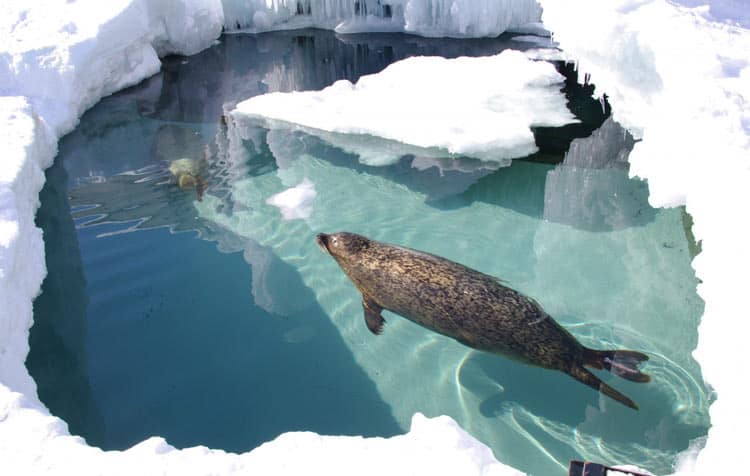
©Yasufumi Nishi/©JNTO
Address: Kuranuma Higashiasahikawacho, Asahikawa, Hokkaido 078-8205, Japan
Opening hours: From 9:30 or 10:30 to 15:30, 16:30 or 17:15 (according to the season)
Closes 3 weeks in April, 1 week in November, and between December 30 and January 1.
Entry fee:
- Adults 820 yen
- Children don’t pay
Information: This zoo was the first in Japan to successfully breed cold region animals. Some major attractions are :
- The penguin walk (a group of penguins that walk in front of the visitors just like a small army)
- The Polar Bear Aquatic Park (where you can see the bears dive and swim)
How to get there: If you land at Asahikawa airport, there’s a bus that take you there in 35 minutes. If you come from Sapporo (the most important city in Hokkaido), there’s an express train ride of 1 hour and 30 minutes from Sapporo Station to Asahikawa Station.
Klook.comOkinawa Churaumi Aquarium
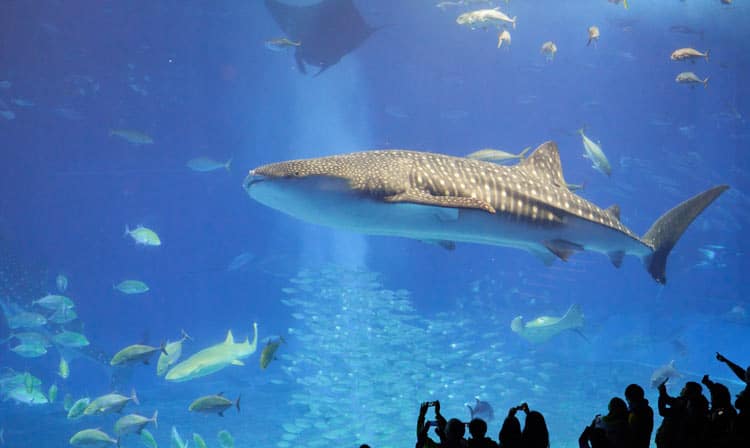
Address: 424 Azaishikawa, Motobu, Kunigami District, Okinawa 905-0206, Japan
Opening hours: From 8:30 to 19:00 in general
Entry fee: During general admission (between 8:30 and 16:00):
- Adults 1,850 yen
- High school students 1,230 yen
- Elementary and junior high school students 610 yen
- Children under 6 don’t pay
After 16:00 until the last admission:
- Adults 1,290 yen
- High school students 860 yen
- Elementary and junior high school students 430 yen
- Children under 6 don’t pay
Information: The Okinawa Churaumi Aquarium is one of the biggest in the whole world, and it is located in the Ocean Expo Park on Okinawa Island. This aquarium is so huge that you can even see whale sharks! Not only you can see them with the common view behind the glass, but you can even see them from above as there is a passage over the tank. This is definitely the most amazing experience in this aquarium, but there are many other interesting things to do there. Here’s the link to the official website if you want more details.
How to get there: If you rent a car at Naha Airport, it takes around two hours to get to the aquarium. There are also express buses available at the airport, but it takes a little longer (up to three hours).
Buy tickets online in advance at Klook.com to avoid queues.
Klook.comKobe Oji Zoo

©Kobe Convention & Visitors Association/©JNTO
Address: 3 Chome-1 Ojicho, Nada Ward, Kobe, Hyogo 657-0838, Japan
Opening hours: From 9:00 to 17:00 (March – October) and from 9:00 to 16:30 (November – February)
Closes from December 29 to January 1 and every Wednesday except if it is a public holiday
Entry fee: Adults 600 yen
Information: One of the major attractions of the Kobe Oji Zoo is the Giant Panda’s House, but it has other interesting animals you can see. There’s also a place dedicated to children where they can even touch some animals.
Here’s the official brochure if you want to take a look at the zoo’s map.
How to get there: If you use the Shinkansen to Shin-Kobe Station, you can get a taxi, and you’re at the zoo in 10 minutes. If you don’t want to take a taxi, there’s also a bus available.
Snow Monkey Park
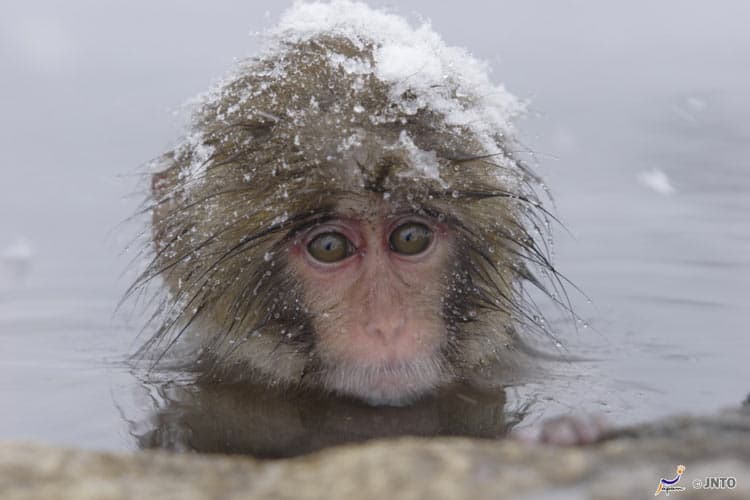
©Yamanouchi town/©JNTO
Address: 6845 Yamanouchi-machi Shimotakai-gun, Nagano 381-0401, Japan
Opening hours: From 8:30 to 17:00 (April – October) and from 9:00 to 16:00 (November – March)
Entry fee:
- Adults 800 yen
- Children 400 yen
- Children under 6 don’t pay
Information: The Snow Monkey Park is known for the Japanese macaques that bathe in the hot spring. The best time to visit the park is between December and March because monkeys will be present more often (they prefer the hot spring when it’s cold outside).
Other than the monkeys bathing, the walk to get to the park is also worth it.
How to get there: You have to walk between 25 and 40 minutes to get to the park from the trail near Kanbayashi Onsen. Luckily, there are several buses that take you to the onsen.
Klook.comSumida Aquarium
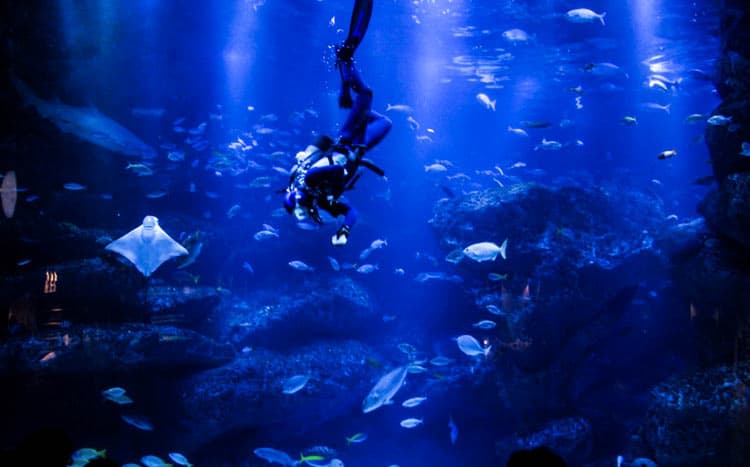
©Saori K/©JNTO
Address: 5-6F, Tokyo Skytree Town Solamachi, 1-2, Oshiage 1- chome, Sumida Ward, Tokyo 131-0045, Japan
Opening hours: From 9:00 to 21:00 in general
Entry fee:
- Adults 2,050 yen
- High School Students 1,500 yen
- Junior High School and Elementary School Students 1,000 yen
- Children 3+ 600 yen
Information: The Sumida Aquarium is located in Tokyo Skytree Town, and it’s the second aquarium to use complete artificial seawater. There are plenty of animals you can see and even a dedicated zone to get a special behind-the-scenes. If you’re visiting the zoos and aquariums in Tokyo, you shouldn’t miss this one.
How to get there: If you come from Haneda airport, you can use the Tokyu Line and arrive at Oshiage (Skytree-mae Station) in 42 minutes. From there, you just have to walk for 5 minutes.
Buy tickets online in advance at Klook.com to avoid queues.
Tama Zoological Park
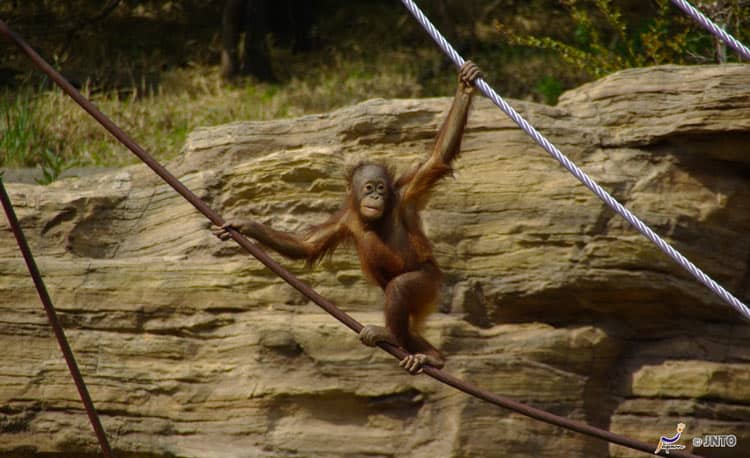
©Yasufumi Nishi/©JNTO
Address: 7 Chome-1-1 Hodokubo, Hino, Tokyo 191-0041, Japan
Opening hours: From 9:30 to 17:00
Closes from December 29th to January 1st and every Wednesday (or Thursday if Wednesday is a holiday)
Entry fee:
- Adults (16 – 64) 600 yen
- Seniors (65+) 300 yen
- Students (13 – 15) 200 yen
- Children under 12 don’t pay
Information: This is another interesting zoo in Tokyo where you can see lots of different species. It is divided into 4 zones:
- Asiatic Garden (Amur tigers, lesser pandas, etc.)
- African Garden (scimitar oryx, Grevy’s zebras, etc.)
- Australian Garden (Koalas, red kangaroos, etc.)
- Insectarium (flower mantises, tiger beetles, etc.)
If you want to know what it looks like, you can download the map from here.
Dreaming of Japan? Here’s your go-to guide for a great trip.
Download Free Guide
How to get there: You can take the Keyo Line or the Tama Monorail and get off at Tama Dobutsu Koen Station. From the station, you just have to walk for 2 minutes to get to the park.
Notojima Aquarium
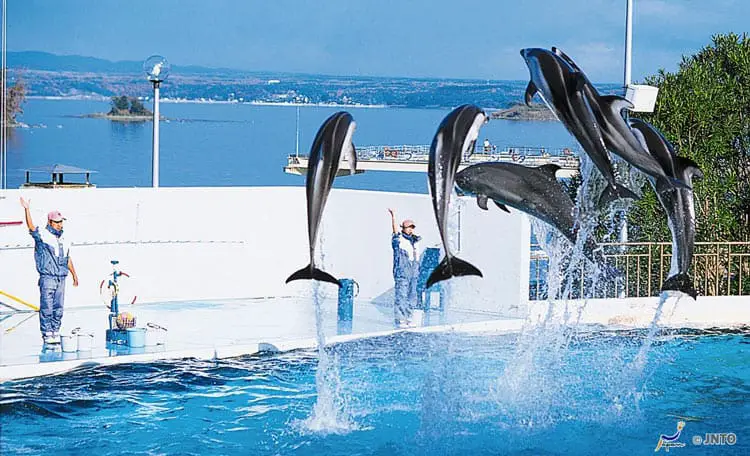
©JNTO
Address: 15 15 40 Notojima Magarimachi, Nanao, Ishikawa 926-0216, Japan
Opening hours: From 9:00 to 17:00 (March 20 – November 30) and from 9:00 to 16:30 (December 1 – March 19)
Closed from December 29 to December 31
Entry fee:
- Adults 1,850 yen
- Children (over 3) 510 yen
- Children under 3 don’t pay
Information: This is another aquarium in Japan where you can see whale sharks. Like other aquariums we saw previously, you can also see different species and interact with some of them directly. It’s worth the visit if you’re traveling away from Tokyo.
How to get there: If you’re traveling from Tokyo, you have to take the Shinkansen to Kanazawa and then the limited express to Wakura Onsen Station.
Kyushu Natural Zoological Park African Safari
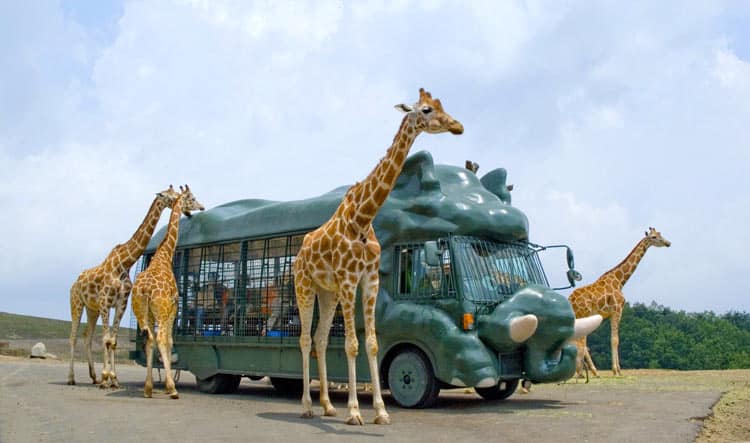
©Promotion Airport Environment Improvement Foundation / ©JNTO
Address: 2-1755-1, Ajimumachi Minamihata, Usa-shi, Oita 872-0722, Japan
Opening hours: From 9:00 to 16:30 (March 1 – October 31) and from 10:00 to 16:00 (November 1 – February 28)
Entry fee:
- Adults (15+) 2,500 yen
- Children (4 – 15) 1,400 yen
Information: Kyushu Natural Zoological Park is the biggest safari park in Japan with 1,400 animals of 70 different species. You have to ride the animal-themed buses of the park to view the animals that cross the park. There is also a petting zoo where you can interact with some animals.
How to get there: The easiest way is by car, if you rent one. Otherwise, you’ll have to mix train rides and bus rides to get to the African Safari.
Takasakiyama Natural Zoological Garden
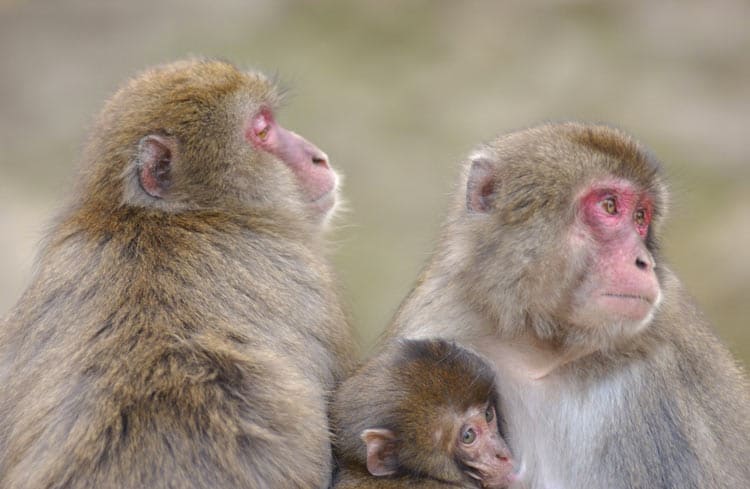
©Promotion Airport Environment Improvement Foundation / ©JNTO
Address: 3098-1 Kanzaki, Oita, 870-0802, Japan
Opening hours: From 8:30 to 17:00
Entry fee:
- Adults 510 yen
- High school students 510 yen
- Junior high school, and elementary school students 250 yen
- Kindergarten children and younger don’t pay
Information: Takasakiyama Natural Zoological Garden is an open park where monkeys can come and go freely. It is a popular park with over 1,500 wild monkeys and an amazing landscape.
How to get there: From Oita airport, you can pick up the bus and leave at Takasakiyama Shizen Dobutsuen Mae stop (50 minutes). Otherwise, you have a bus from JR Oita Station or JR Beppu Station (25 minutes).
Oita Marine Palace Aquarium Umitamago
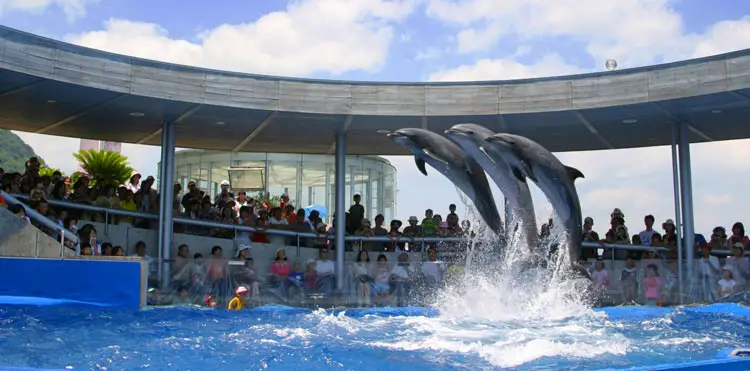
©Promotion Airport Environment Improvement Foundation / ©JNTO
Address: 3078-22 Kanzaki-uto, Oita-city 870-0100, Japan
Opening hours: From 9:00 to 19:00 in general
Entry fee:
- Adult 2,200 yen
- Elementary and Junior high school students 1,100 yen
- Children (4+) 700 yen
- Children under 3 don’t pay
Information: In this aquarium, you’ll have a lot of shows where animals perform to entertain the visitors. The aquarium has different levels with different species that you can admire. There is also a touching area for a different experience.
How to get there: As with some other parks in Oita, the access is not that easy. The only public transportation is the bus, mostly from Beppu Station or Oita Station.
Yokohama Hakkeijima Sea Paradise
Address: Hakkeijima, Kanazawa Ward, Yokohama, Kanagawa 236-0006, Japan
Opening Hours: The island is accessible all the time. All the different structures have different opening hours so you have to check each one you intend to visit.
Entry fee:
During winter :
- Adults & Senior High School Student 4,550 yen
- Junior high school and elementary school students 3,300 yen
- Children (4+) 1,850 yen
- Seniors (65+) 3,300 yen
During the rest of the year:
- Adults & Senior High School Student 5,050 yen
- Junior high school and elementary school students 3,600 yen
- Children (4+) 2,050 yen
- Seniors (65+) 3,600 yen
Information: Hakkeijima Sea Paradise is one of the biggest theme parks in Japan, and it uses a whole island. If you saw the video above, I guess you already have a very clear idea of it. Lots of amazing animals and a roller coaster over the water is a mix we don’t see every day.
How to get there: If you come from Tokyo, it takes around 1 hour and 30 minutes. You have to pick up the train to Kanazawa-Hakkei Station and then the bus to Hakkeijima Station. From there, you have to walk for 10 minutes.
Buy tickets online in advance at Klook.com to avoid queues.
And that’s it, we arrived at the end of this list. I hope you have now a better idea of all the possibilities available in Japan. Whenever possible, prefer open parks where animals can walk freely, because we all know that animals kept between walls or fences is not the best option, and it’s much better to see their natural behavior.
Disclaimer: Although I do my best to keep the post updated, information like fees and opening hours is changing all the time. Make sure you check the official website of the zoo/aquarium/park you want to visit to see if there’s any recent change.


